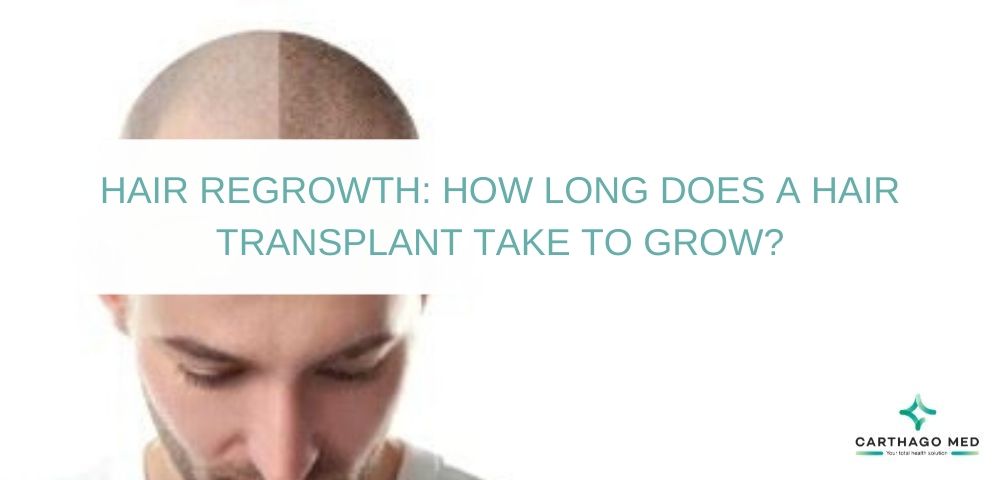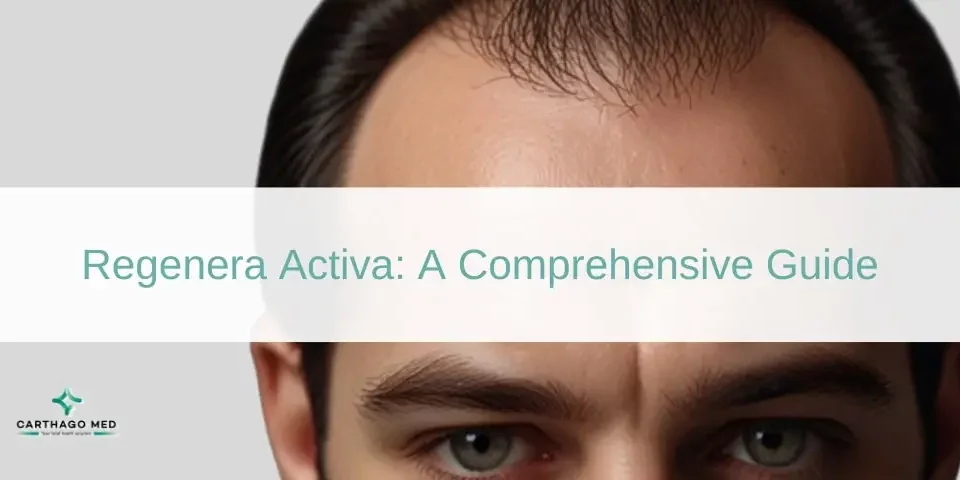
Hair regrowth: how long does a hair transplant take to grow?
Planning to get a hair transplant surgery, yet feeling tormented with a lot of questions? This blog section is for you!
One of the most asked questions after having underwent hair transplant surgery is how long does it take for the hair to fully grow back?
You will find in the following how the whole process of hair regrowth after your hair transplantation goes in the months that follow the intervention:
How long does hair take to grow?
It is possible to start seeing results of the surgery a few days after the intervention; however, the patient has to wait for a few months to rejoice the final results, until the hair scalp has gained its final aspect.
Hair Transplant after Three days
Three days post your hair transplant procedure marks a pivotal moment in your recovery journey. During this phase, the natural healing process is underway, and you may notice the gradual shedding of scabs that have formed on your scalp. This shedding is a positive sign, indicating that your body is responding well to the transplant, and it is perfectly normal. As the scabs start to fall out, you'll find yourself reaching a significant milestone— the freedom to take a refreshing shower and cleanse your hair gently. This step is crucial in maintaining the cleanliness and hygiene of your scalp, promoting the overall well-being of your newly transplanted hair follicles.
Hair Transplant after Eight to twelve days
Following the initial eight to twelve days post-hair transplant, a captivating phase of renewal takes center stage. It is during this period that the once-dormant follicles spring into action, orchestrating the symphony of regrowth with impressive precision. As if choreographed by nature itself, the transplanted hair begins to assert its presence, reclaiming lost territory with a compelling blend of resilience and grace.
Hair Transplant after Three weeks
In the third week post-hair transplant, you may notice some shedding and a decrease in density and thickness. Don't be alarmed; this is a normal part of the healing process. The shedding signifies the transition of transplanted follicles into a resting phase before regrowth. Patience is key, as following proper post-surgery care will lead to the emergence of stronger, healthier hair in the months ahead.
Hair Transplant After 2 Months
As you approach the two-month milestone following your hair transplant, the landscape of your scalp begins to reveal promising signs of progress. During this phase, keen observers often witness the initial whispers of rejuvenation, with new hair follicles starting to make their presence known. While the growth is in its infancy, the sprouting of these nascent strands symbolizes the transformative journey unfolding .
Hair Transplant After 3 Months
Three months post-hair transplant, a remarkable metamorphosis unfolds, marked by increasingly conspicuous signs of progress. The transplanted hair, now firmly rooted, exhibits continued growth, presenting a burgeoning manifestation of revitalization. This stage heralds a pivotal juncture in the journey, as the overall density of the transplanted area may undergo a discernible enhancement.
Hair Transplant After 4 Months
Reaching the fourth month post-hair transplant marks a notable juncture in the journey to restored hair. This phase is characterized by a considerable enhancement in hair coverage, as the transplanted follicles continue to establish themselves and flourish. Observably, the texture of the newly grown hair begins to evolve, gradually mirroring the natural feel and appearance of one's original hair. This transformative period often brings about a heightened sense of satisfaction and confidence for individuals undergoing the process, as the visible outcomes become increasingly harmonious with their overall aesthetic goals. Moreover, the resilience of the transplanted hair becomes more evident during this stage, showcasing the success of the procedure and laying the foundation for long-lasting results.
Hair Transplant After 6 Months
Upon reaching the significant milestone of six months post-hair transplant, the transformed landscape of your hair begins to manifest even more compellingly. The implanted hair, having taken root and acclimated to its new environment, undergoes a remarkable evolution. At this juncture, the density of the transplanted follicles experiences a noticeable surge, contributing to a lush and natural-looking mane. The synergy between the newly integrated hair and your existing strands becomes increasingly seamless, creating a harmonious and unified appearance. The journey from this point onward is marked by a heightened sense of excitement as the tangible outcomes of the procedure continue to unfold. Witnessing the cohesiveness and flourishing density of your revitalized hair is not only visually rewarding but also emotionally uplifting, affirming the success of the transformative process. Embrace this stage, for it heralds the culmination of the initial phases, promising a fuller, more vibrant head of hair in the ongoing narrative of your personal rejuvenation.
Hair Transplant after one year
One year post-hair transplant, the transformative journey reaches its zenith as the newly transplanted hair achieves its full growth potential, culminating in a lush and natural-looking mane. Patients, at this juncture, witness the fruition of their decision to undergo the procedure, as the once-thinning or receding areas are now adorned with a flourishing and healthy head of hair. The intricate and delicate process of transplantation, undertaken with precision and expertise, has yielded results that extend beyond mere restoration—each strand now seamlessly integrates with the existing hair, creating a harmonious and aesthetically pleasing appearance. Moreover, the texture, color, and density of the transplanted hair align with the patient's natural attributes, contributing to a seamless blend that enhances overall facial features. As the final results become evident, patients often experience a boost in confidence and a positive transformation in their self-perception. The successful culmination of the one-year milestone signifies not only the physical restoration of hair but also the emotional and psychological rejuvenation that accompanies the restoration of a vital aspect of one's identity.
Hair Transplant 6 Months vs. 1 Year
The difference between the sixth month and the one-year mark is remarkable. While substantial growth occurs by six months, the full results are often realized after a year. The hair continues to mature, and any initial concerns about the outcome typically diminish.
How to Speed Up Hair Regrowth After a Hair Transplant?
Patience
The most important value to arm yourself with after your hair transplant surgery is «patience». Contrarily to what most people think, the results of hair transplantation are not immediate and the patient has to wait in order to rejoice the final results of their surgery. The process of hair regrowth after the surgery will naturally go on for a few months until the totality of the scalp is covered; and you will therefore be able to enjoy your dense and thick hair.
Wait for Growth: Post-Transplant Haircut Tip
Patience is key when it comes to post-transplant haircare, and waiting for your transplanted hair to reach its full growth potential is crucial before heading to the salon. Rushing into a haircut too soon can potentially compromise the desired outcome of your hair transplant. Allow sufficient time for the transplanted follicles to establish themselves and flourish, ensuring a healthier and more robust appearance. This waiting period not only promotes optimal hair growth but also allows the hair to attain its natural texture and density. Once the transplanted hair has fully matured, you'll be in a better position to communicate your haircut preferences to the stylist, ensuring that the end result aligns perfectly with your vision.
6 Months: Shielding Transplanted Hair
You will need to avoid direct sun exposure and the use of hair products for at least 6 months; especially the ones that contain chemicals like hair gel. This can seriously damage your scalp and newly transplanted hairs.
Gentle Wash: Post-Transplant Care
Regarding hair washing, you should not scratch or rub your hair too hard when washing it; especially during the first few weeks that follow your hair transplantation. It is recommended to wash your hair gently and avoid the use of shampoos that contain chemicals.
Balanced Diet
Post-hair transplant, a balanced diet is essential. Dr. Lindsey Bordone emphasizes that restrictive dieting can impede the resources and nutrients required for hair growth. Vitamins like biotin, vitamin C, E, D, along with iron, zinc, Omega 3, and Omega 6, contribute to optimal hair health. Vitamins and Minerals for Hair Growth play a pivotal role in promoting hair growth. Biotin, often referred to as the "hair vitamin," is known for its role in maintaining healthy hair, skin, and nails. Vitamin C supports collagen production, vital for hair structure. Vitamin E acts as an antioxidant, protecting hair follicles from damage.
The importance of a balanced diet cannot be overstated. It provides the necessary nutrients that support overall health and, specifically, hair growth. Restrictive dieting, especially after a hair transplant, can lead to a deficiency in essential vitamins and minerals critical for the regrowth process.
Minoxidil
what is minoxidil?
Minoxidil, a clinically proven prescription-strength component, counteracts hair loss by nullifying follicle shrinkage, enhancing blood flow, and stimulating follicle transition to the growth phase. Understanding the science behind minoxidil usage is pivotal for those seeking effective regrowth.
Mechanism of Action of Minoxidil
While the exact mechanism by which minoxidil stimulates hair growth is not fully understood, its effectiveness is well-documented. Minoxidil has been shown to nullify follicle shrinkage, enhance blood flow to and around follicles, stimulate the transition of follicles to the growth phase, and extend the development period of each follicle. It is crucial for individuals considering minoxidil to consult with a healthcare professional, as its application and dosage should be personalized based on individual needs and health conditions.
Head Massage
Scalp Massage for Hair Growth: Promising Findings
While research on scalp massage's effects on hair regrowth is ongoing, emerging studies suggest positive outcomes. Scalp massage is believed to enhance hair thickness by stimulating hair follicles and widening blood vessels beneath the skin, promoting overall hair growth.
Benefits of Scalp Massage
Scalp massage is a therapeutic practice that has been associated with various health benefits, including potential benefits for hair growth. The mechanical stimulation of the scalp during massage may stretch the cells of hair follicles, promoting thicker hair growth. Additionally, scalp massage is thought to improve blood circulation in the scalp. This increased blood flow delivers essential nutrients to the hair follicles, promoting a conducive environment for hair growth.
Caffeine-Infused Hair Products
Caffeine Boost: Hair Growth Magic!
Caffeine-infused products, such as oil or shampoo, may enhance hair fiber development. Caffeine's stimulation of hair follicles accelerates the growth process by interacting with caffeine receptors on the skin.
Caffeine and Hair Growth
The relationship between caffeine and hair growth has been a subject of interest in recent research. Caffeine is believed to have a stimulant effect on hair follicles, promoting increased blood flow and accelerating the development of dermal papillae and root sheath cells. Caffeine-infused hair products, when applied topically, are thought to deliver this stimulant effect directly to the scalp, potentially enhancing the growth environment for hair.
Castor Hair Oil
Your Scalp's Defense Against Dryness
Derived from the castor oil plant, studies indicate that castor oil, rich in fatty acids, penetrates hair and skin effectively. The protective properties of these fatty acids combat scalp dryness, a leading cause of excess shedding.
Benefits of Castor Oil for Hair
Castor oil has gained popularity for its potential benefits for hair health. Its fatty acid composition, including ricinoleic acid, is known for its moisturizing and nourishing properties. When applied to the scalp, castor oil may help combat dryness, reducing the risk of excessive shedding. Additionally, castor oil is believed to have antimicrobial properties, supporting a healthy scalp environment. A healthy scalp is essential for optimal hair growth.
Egg Yolk
Unlocking Egg Yolk's Hair Growth Secrets
Egg yolk contains ingredients, notably keratin protein, that support follicle development and increase hair growth rates. Understanding the components within egg yolks contributing to enhanced development is essential for individuals seeking natural remedies.
Nutrients in Egg Yolk for Hair Growth
Egg yolks are rich in nutrients that are beneficial for hair health. Keratin protein, present in egg yolks, plays a crucial role in strengthening and protecting the hair follicle root and shaft. This protein aids in maintaining the structural integrity of the hair, contributing to increased growth rates.
Some Recommendations Regarding Hair Transplants
For individuals considering or recovering from hair transplants, it's essential to manage expectations, follow post-transplant care guidelines, and consult with professionals. The recovery timeline may span several months, and patience is key.
Professional Guidance
Consulting with a qualified healthcare professional or a specialist in hair restoration is crucial throughout the entire process. From pre-surgery consultations to post-transplant care, having expert guidance ensures that individuals make informed decisions and follow personalized care plans.
Post-Transplant Care Guidelines
It is important in order for hair regrowth to occur in the most adequate conditions, the patient has to respect the doctor’s recommendations to the letter.This includes proper cleansing of the transplanted area, avoiding exposure to direct sunlight, and refraining from activities that could disrupt the healing process.It is also important not to worry or stress when the patient notices that their transplanted hairs have fallen out during the first few months following the surgery as this is a very natural phenomenon; and part of the steps that follow hair transplantation.
Managing Expectations
Realistic expectations play a pivotal role in the satisfaction of individuals undergoing hair transplants. Understanding that significant regrowth may take time and that the process involves different phases, including shedding, prepares individuals for the journey ahead.









